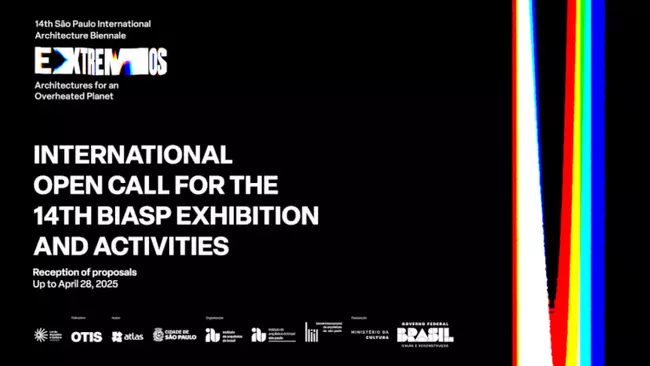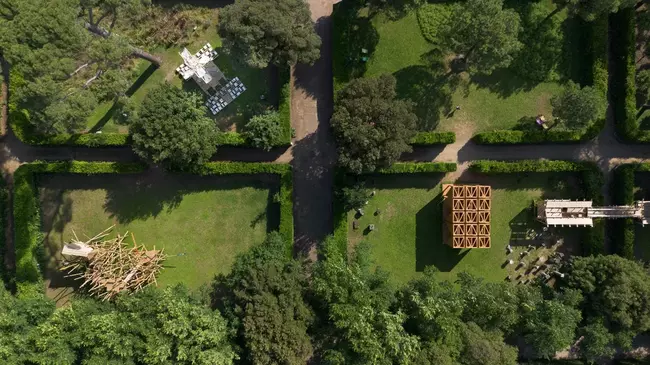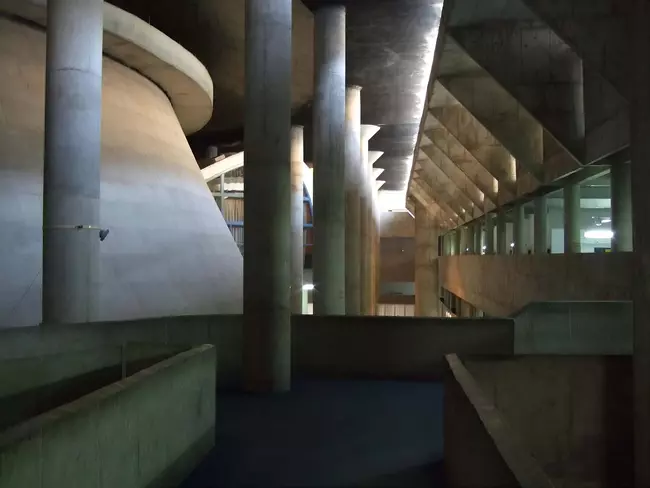- ConcoursSite Internet
DeadlineContact
info@oasejournal.nlPublié le 03/11/2021
Call for Abstracts OASE #113. Authorships

© © Vitra Design Museum Archive OASE 113: AuthorshipsTom Avermaete, Irina Davidovici, Christoph Grafe, Véronique Patteeuw (eds.)Though the Author’s empire is still very powerful (recent criticism has often merely consolidated it), it is evident that for a long time now certain writers have attempted to topple it. . . . The removal of the Author (one could talk here with Brecht of a veritable ‘distancing’, the Author diminishing like a figurine at the far end of the literary stage) is not merely an historical fact or an act of writing; it utterly transforms the modern text.—Roland Barthes, The Death of the Author, 1967—Is the author of a work of art important? The Life and Opinions of Tristram Shandy, Gentleman, arguably the most important English novel of the eighteenth century, was published without revealing its author, Laurence Sterne. The value of the work was, however, not affected by this omission, which clearly did not disturb its originator. In architecture, too, for centuries the authorship of buildings was either unknown or ambiguous. The identification of artistic ideas and buildings with particular individuals is more pronounced in the Western world as the result of processes of division of labour and social distinction.Authorship seems to lend the work of art a distinct aura, not of its physicality, but as a sedimentation of intellectual or creative labour. The author owns the ideas of the work, if not the work. This may be one of the reasons why the concept of authorship was historically also applied to architectural works of art, which are, by definition, the product of collective endeavours. The tendency of involving an ever-larger number of experts in the design process has perhaps enhanced the idea that somewhere, beyond individual expertise, there has to be a deeper origin. Hence the modernist narrative of a ‘real’ single author, whose ‘genius’ transcends the technocratic procedures of everyday production.What does the author’s ‘owning’ of a project mean? And does this sense of ownership still prevail in contemporary architecture culture? Is the concept of individual authorship not a cul-de-sac, preventing the processes of invention and innovative thinking often necessary for addressing a practice that is more collaborative than ever? In architecture, single authorship has been under pressure from two directions. On the one hand the technological – or should we say technocratic? – impulse to integrate a variety of expertise and forms of knowledge has, since the 1970s, provoked demands for flatter hierarchies and for assembling ‘building teams of engineers and designers’. The building team, then, becomes the nemesis of authorship. Its result is design by committee, guided by a more or less benevolent sense of rationality. The other assault on the concept of authorship is driven by cultural arguments rooted in avant-garde explorations of subjectivity. Postwar theory and particularly post-1968 cultural studies are united in their suspicious attitude to the dominance of the single-author concept, which is a specifically modern inheritance. Fuelled by a broader and healthy distrust of authority, these theories also question the implied superior status of authorship within the organisation of creative labour.In the architecture of the early millennium, the effects of questioning authorship have been positively paradoxical. Design approaches that suspend artistic or intuitive processes of invention (Datascape, parametric design) have given occasion to some of the most notable cults of personality. Maintained by the professional media, the road form ‘non-author’ to ‘star-architect’ is extraordinarily short. Other practices that initially claim collective authorship often over time separate into single author units, as the initial emulsifying agents of idealism lose their potency. On the other hand, an ever-increasing multitude of expertise not only undermines claims to single authorship but also produces new, significant architectural conceptions of authorship. One example among many is in the field of adaptive reuse or Umbau. Here the nexus of conservation and invention provides ample evidence, with both those responsible for preserving the context and adding to it making justifiable, perhaps equal, claims to creative authorship. Other areas of practice, in which the various aspects of a project are more closely integrated in the built artefact, can conceal individual contributions, rendering authorship less clear-cut and thus more open to contestation.What, then, might be the essential argument for retaining the concept of authorship in architecture today? Perhaps the most resounding argument is this: authorship is not only an act that implies originality, it is also a deeply felt commitment to a work that until its realisation belonged only to the author, but to which he or she is also completely devoted. The reciprocal claim between creator and work, which is not only a romantic cliché but also the condition for transcending one’s own limits in further work, can hardly be thought of in any other way than through the concept of the individual author. The question remains, however, whether there is not also a need to add to this other, more diffuse, but still no less effective, notions of authorship. Especially in a professional practice in which authorship usually goes hand in hand with the management of an office, the question of alternative forms of authorship is not only permissible, but also necessary. The combination of authorship and entrepreneurial activity that characterises the status of the architect within the profession libérale may also be limiting. Wouldn’t it be more interesting to imagine the concept of the author in architecture as a space of possibility, as a field in which the responsibility, the commitment, even being completely absorbed by the work of invention, is distributed among several heads and hands? Shouldn’t there also be, along with the beautiful image of flat hierarchy, one that creates space for depth?This issue of OASE wants to take a position in relation to the ways in which authorship in architectural practice is both claimed and addressed.• It wants to argue for the importance of authorship and explore a wider variety of its conceptions in architectural practice.• It wants to obtain a more nuanced and varied understanding of the characters and roles that authorship, understood as the ‘owning’ of a particular architectural practice, plays.• It wants to offer a theoretical and methodological framework to address alternative forms of authorship;• It wants to investigate alternative, contested and hidden authorships so as to understand the responsibility of the creative act in different ways.For this issue of OASE we are seeking contributions that examine aspects of authorship. We are interested in focused discussions of relevant contemporary or historical projects or buildings in relation to authorship’s varying definitions and understandings, focusing on a single case study. We specifically welcome proposals that address the field of tension between individual and collective authorship or between cultural claims and social responsibility. Each essay might elaborate on one form of authorship, be it neutralising authorship, deferring authorship, authorship by implication, resistant authorship, activist authorship, reinforced authorship, embedded authorship, fluid authorship and so on. What is being achieved by other, new or reactivated forms of authorship?Abstracts of maximally 500 words (for texts of ca. 2,000 words) must be submitted in Dutch or English no later than 21 November 2021 (18:00 Central European Time) via info@oasejournal.nl, together with the author’s name(s), e-mail address, professional affiliation and a short bio (150 words maximum).

Wallonie-Bruxelles Architectures est une agence de promotion culturelle et économique des architectes de Bruxelles et de Wallonie sur la scène internationale.



